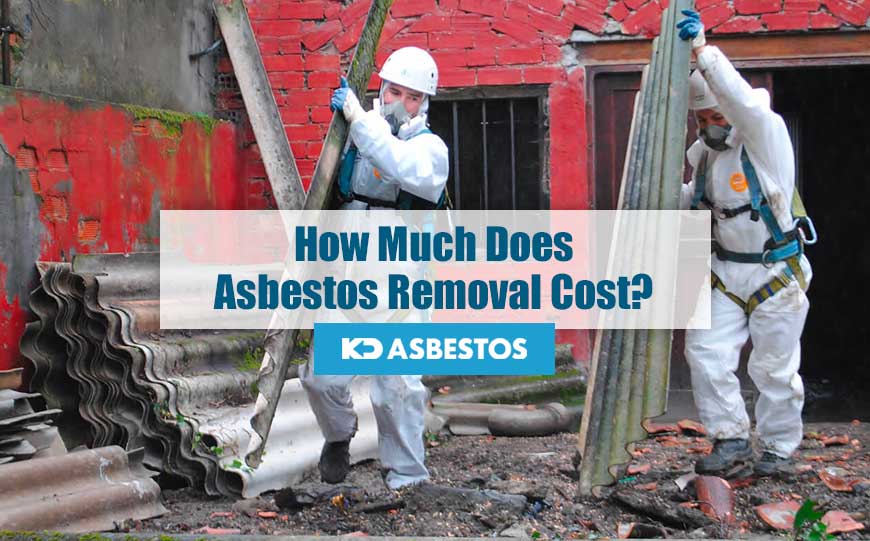
Asbestos removal is a specialist service whereby a licensed professional will have the necessary expertise and equipment to remove and dispose of hazardous materials.
The cost of this service may vary from one service provider to another, but the main factor for the overall cost will depend mainly on the amount of asbestos that needs to be removed.
There will also be the issue of the location, the size of the area, and if there are any access constraints.
Asbestos removal is a service which is closely monitored and regulated since safe removal and disposal is of paramount importance.
The cost will also depend on the method that will need to be used, as the asbestos removal process may vary depending on a number of factors.
Table of Contents
Initial Factors
The following are some of the main factors that will need to be evaluated in order to determine the best asbestos removal process.
Asbestos Removal Process
Asbestos Survey
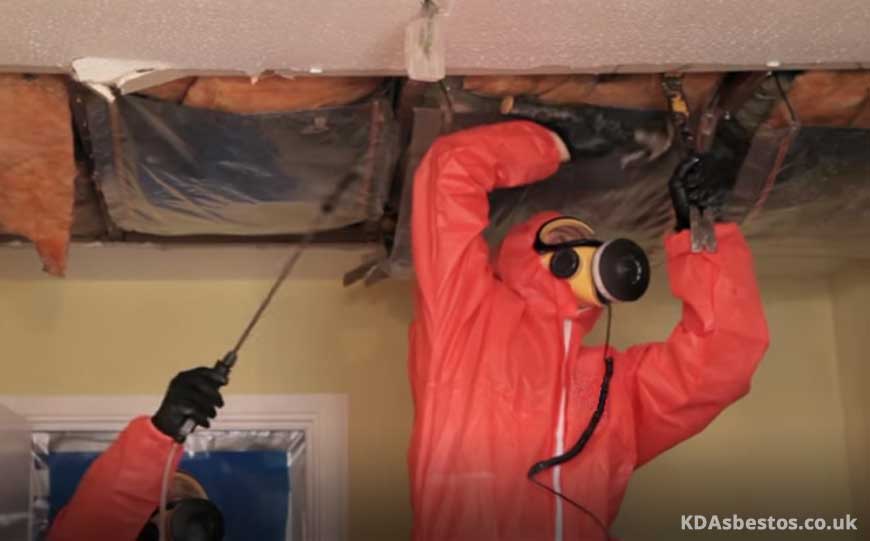
First of all, a qualified specialist will need to determine whether there’s any asbestos present or not.
An asbestos survey will need to be carried out by a hazardous materials specialist.
Samples will be taken to be evaluated in a laboratory.
The presence and, if so, the type of asbestos discovered will be identified.
There will also be a clearer idea as to the quantity of asbestos that is being dealt with and the associated risks.
Such asbestos surveys typically cost upwards of £50 for the surveyor’s fee, and around £200 minimum for the asbestos survey to be carried out.
Asbestos Testing

It is impossible to tell for sure whether there are asbestos fibres present in a material unless a professional asbestos test is carried out.
The fibres are too small to be seen with the human eye.
Therefore asbestos testing of samples needs to be carried out in a fully approved UKAS accredited laboratory.
Such a lab will need to adhere to the ISO-17025 standards and follow the HSG248 Analysts Guide.
The asbestos testing will be carried out following strict procedures to determine the presence of any asbestos fibres.
Such tests can be carried out on samples of materials, or on contaminated soil.
Bulk analysis may also need to be carried out in some cases, as well as density asbestos testing.
Erect Enclosure
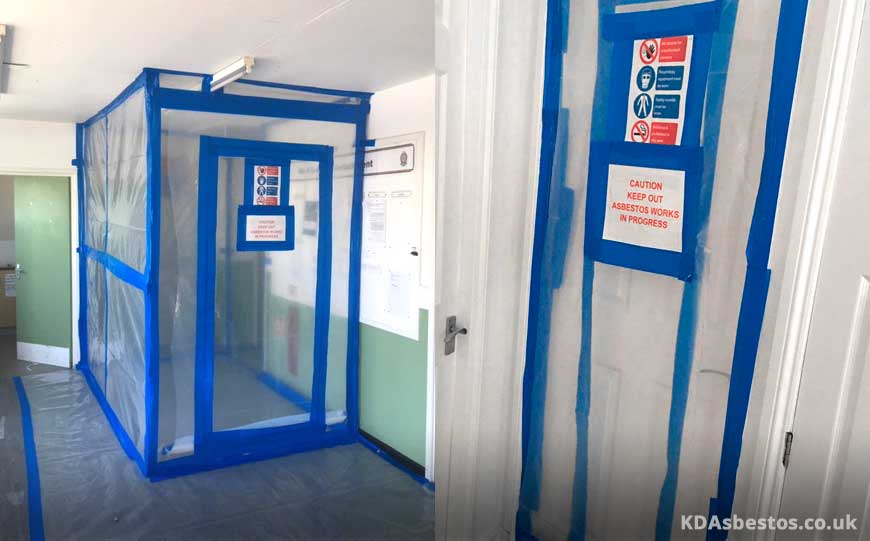
In order to remove asbestos, it will be necessary to erect an enclosure to have a safe contained area to carry out this very sensitive procedure.
The enclosure will need to be erected by the licensed contractor before and removed after the process is completed.
All this needs to be done following strict regulations to ensure a safe process throughout.
Options
There are two main options one can choose from when it comes to asbestos removal.
In some cases asbestos encapsulation is more suitable than asbestos removal, where the material is too dangerous to remove.
It may be in poor condition or prone to breakage, which could lead to high levels of hazardous fibres being released into the atmosphere.
Let us discuss both options in more detail below.
Asbestos Encapsulation
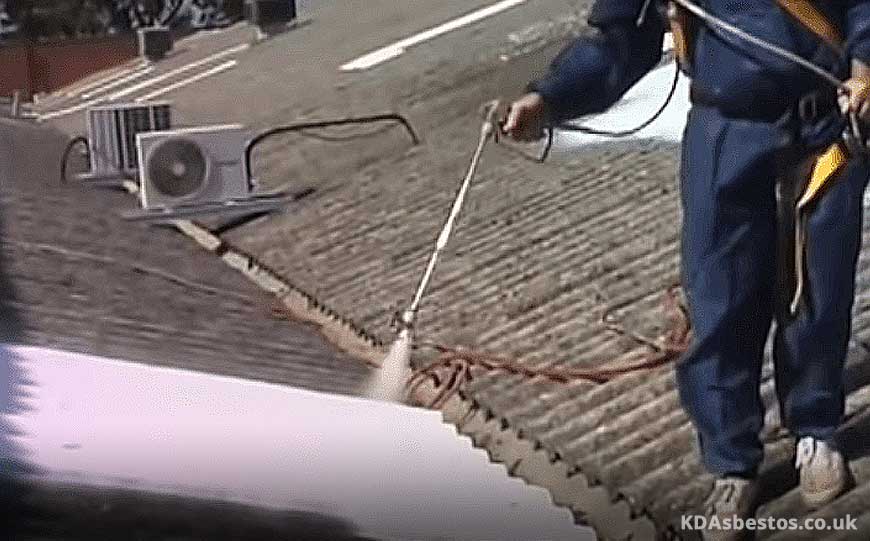
Once sample testing has been completed, the report might highlight asbestos is present, and thus asbestos encapsulation is the best option going forward.
During this process a protective adhesive is applied to the asbestos materials.
This will help to seal and safeguard against the release of any harmful dust.
Asbestos encapsulation is not always feasible but when it is, it generally costs around £8 per square metre to be carried out.
Obviously if it is a much larger area, it might not be recommended.
Asbestos Removal
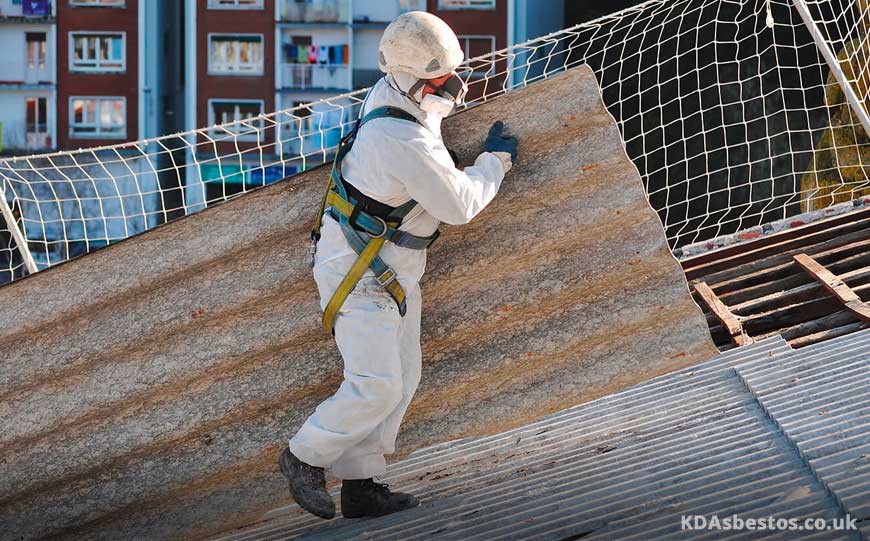
In case asbestos encapsulation is not an option, then asbestos removal will need to be carried out.
The cost of this procedure, carried out by a licensed professional is of around £50 per square metre.
After Completion
Once the asbestos removal process is completed there are a number of steps that will need to be carried out.
Environmental Clean Up
All removed asbestos will be collected and disposed, and the area will be properly cleaned to ensure there are no traces of material which contained asbestos left behind after the process is complete.
This is important to ensure the area is safe for reoccupation.
Air Tests & Inspections
Air tests and inspections will be carried out in order to ensure it is safe enough for the place to be reoccupied.
This is often referred to as clearance monitoring.
The process involves a thorough visual inspection inside the enclosure, followed by air monitoring on various levels.
Background air monitoring, leak air monitoring, and reassurance air monitoring are all important.
Dismantle Enclosure
Once all the cleaning up and air testing have been completed, the enclosure can then be dismantled.
Certification & Documentation
Licensed asbestos removal service providers will accompany their work and tests with the necessary documentation.
This includes a certificate of reoccupation, which shows that all the stages have been completed and that the area is now considered to be safe and can be reoccupied.
Asbestos Removal Cost
As you may now appreciate, the asbestos removal cost can vary depending on the various factors we discussed above.
These include the quantity of asbestos that needs to be removed, its location, and the area involved.
There are various steps and processes that need to be carried out both before as well as after the actual removal is carried out.
Considering the various phases, the specialised equipment needed, and the expertise required to perform such a service, one can say that the typical asbestos removal cost in the UK is quite reasonable.
Moreover one needs to consider the risks involved around this work.
Conclusion
Since the costs associated with asbestos removal depend on a number of aspects, it is best to have an asbestos removal specialist to visit the site and carry out a survey to give you an estimate of the costs involved.
Each case varies from another and we could only give you a general idea of the costs here.
If asbestos is only present in a domestic water tank, it can be easily removed and disposed of and the fee would generally be just around £200.
But, if there is asbestos in a larger area, such as a garage, the costs will increase depending on the size and the quantity of asbestos.
In such a case it could easily amount to some £2000.
If you come to think of it, you cannot afford not to have the asbestos removed as the dangers it poses are very high.
At the end of the day, nothing is more important than safety, health and peace of mind.